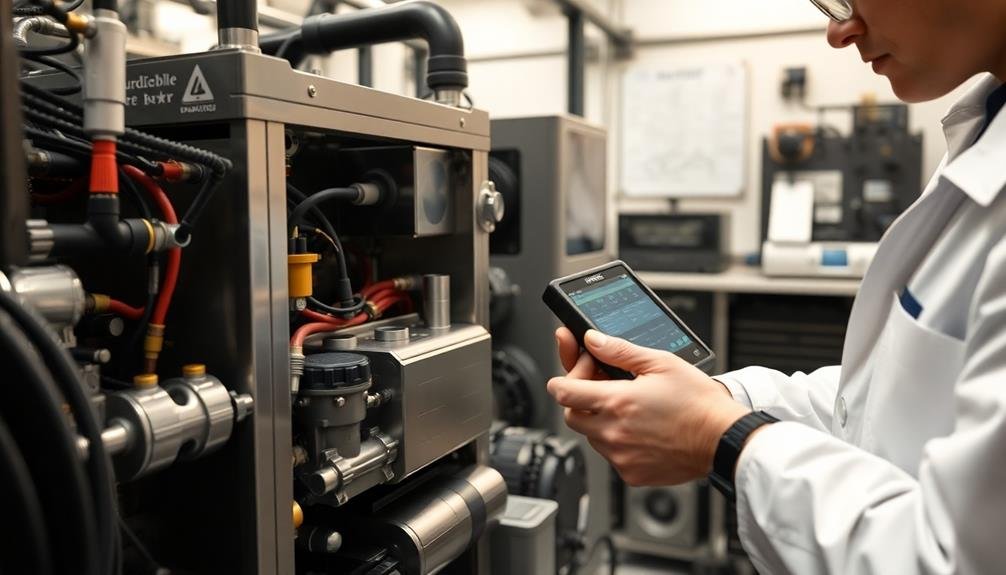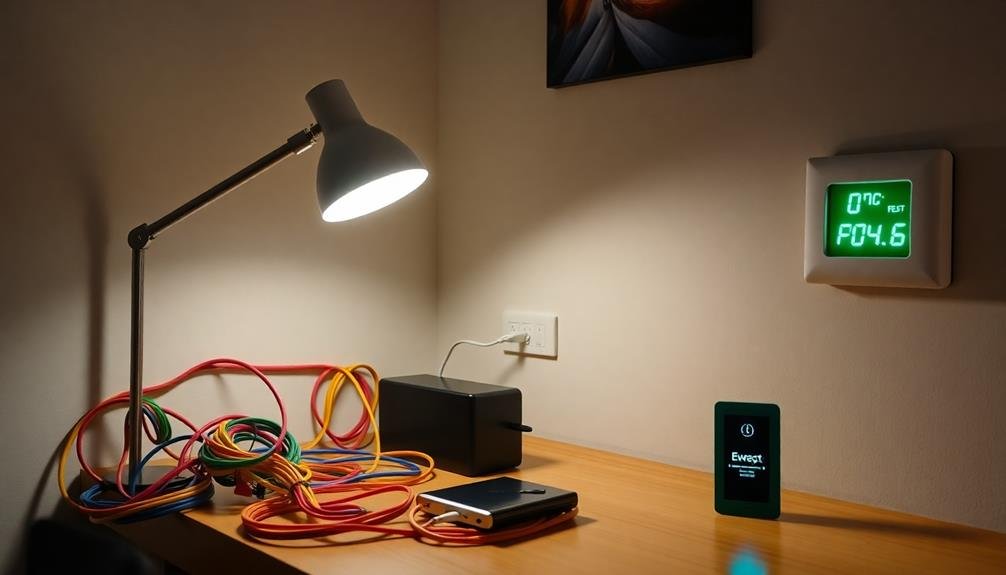To maximize your home fuel cell system's lifespan, focus on these three key maintenance practices. First, conduct regular system inspections, including visual checks for wear and monitoring performance metrics. Second, manage water properly by maintaining appropriate levels, monitoring humidity, and cleaning filters. Third, replace components in a timely manner, such as changing the fuel cell stack every 5-7 years and updating filters annually. By following these practices, you'll guarantee peak efficiency and extend your system's longevity. Dive deeper into each practice to fully master the art of home fuel cell maintenance.
Regular System Inspections

Conducting regular system inspections is essential for maintaining the efficiency and longevity of your home fuel cell. You should perform visual checks at least once a month, looking for signs of wear, corrosion, or damage to the system's components. Pay close attention to the fuel cell stack, inverter, and fuel processor.
Check all connections and fittings for tightness and any signs of leakage. Inspect the air intake and exhaust vents to confirm they're clear of debris and functioning properly. Monitor the system's performance metrics, including power output, fuel consumption, and efficiency rates. Compare these to the manufacturer's specifications to identify any deviations.
Examine the coolant levels and quality, topping up or replacing as necessary. Inspect electrical connections for loose wires or signs of overheating. Check the fuel supply system, including storage tanks and delivery lines, for any irregularities.
Look for unusual noises, vibrations, or odors during operation, as these can indicate underlying issues. Keep detailed records of your inspections, noting any observations or changes in performance.
This documentation will help you track trends and identify potential problems early on, guaranteeing your home fuel cell operates at peak efficiency for years to come.
Proper Water Management
Maintaining proper water management is essential for the best performance of your home fuel cell system. You'll need to monitor and control water levels to guarantee maximum efficiency and prevent damage.
Start by regularly checking the water reservoir and refilling it with distilled or deionized water as needed. Don't use tap water, as it contains minerals that can harm your system.
Keep an eye on humidity levels within the fuel cell. Too much moisture can lead to flooding, while too little can cause the membrane to dry out. Adjust the system's humidifier settings accordingly.
You should also inspect the condensate collection system and drain it as necessary to prevent overflow.
In colder climates, take precautions to prevent freezing. Consider installing freeze protection measures or using antifreeze solutions designed for fuel cells.
Regularly clean water filters and replace them according to the manufacturer's recommendations. This helps maintain water quality and prevents contaminants from entering the system.
Lastly, watch for any signs of leaks or unusual water consumption. Address these issues promptly to avoid more serious problems.
Timely Component Replacement

Along with proper water management, timely component replacement is key to keeping your home fuel cell system running smoothly.
You'll need to replace various parts at regular intervals to maintain peak performance and efficiency.
The fuel cell stack is the heart of your system and typically needs replacement every 5-7 years. Keep track of its age and performance, and plan for its replacement before efficiency drops considerably.
The air and fuel filters should be changed annually or more frequently if you live in a dusty area. These filters protect the stack from contaminants that can reduce its lifespan.
Replace the water pump every 3-4 years to guarantee proper coolant circulation.
The inverter, which converts DC power to AC, may need replacement after 10-15 years. Monitor its performance and plan accordingly.
Don't forget about smaller components like gaskets, seals, and hoses. These should be inspected annually and replaced if showing signs of wear or degradation.
Frequently Asked Questions
How Do Ambient Temperature Fluctuations Affect Fuel Cell Performance?
You'll notice that temperature changes impact your fuel cell's performance. Extreme cold can reduce efficiency, while high heat may cause damage. It's best to maintain a stable environment to guarantee peak operation and longevity of your fuel cell.
Can I Use My Fuel Cell During Power Outages?
Yes, you can use your fuel cell during power outages. It'll provide a reliable backup power source for your home. Just confirm it's properly maintained and has adequate fuel supply. You'll enjoy uninterrupted electricity when the grid fails.
What Safety Precautions Should I Take When Operating a Home Fuel Cell?
You should guarantee proper ventilation, install carbon monoxide detectors, and keep flammable materials away. Don't tamper with the system; leave repairs to professionals. Always follow manufacturer's guidelines and have regular inspections to maintain safe operation.
Are There Any Restrictions on Where I Can Install My Fuel Cell?
Yes, there are restrictions. You'll need to install your fuel cell in a well-ventilated area, away from living spaces. Avoid basements, garages, and enclosed areas. Check local building codes and manufacturer guidelines for specific requirements.
How Does Fuel Quality Impact the Longevity of My Home Fuel Cell?
Fuel quality greatly affects your home fuel cell's longevity. You'll want to use high-purity fuel to prevent contaminants from damaging the cell's components. Impurities can lead to reduced efficiency, performance issues, and shortened lifespan of your system.
In Summary
You've learned the top three practices for maintaining your home fuel cell system. By conducting regular inspections, managing water properly, and replacing components on time, you'll extend your system's lifespan and guarantee peak performance. Remember, consistency is key. Don't neglect these vital steps, as they'll save you money and headaches in the long run. With proper care, your fuel cell will continue to provide efficient, clean energy for years to come.





Leave a Reply